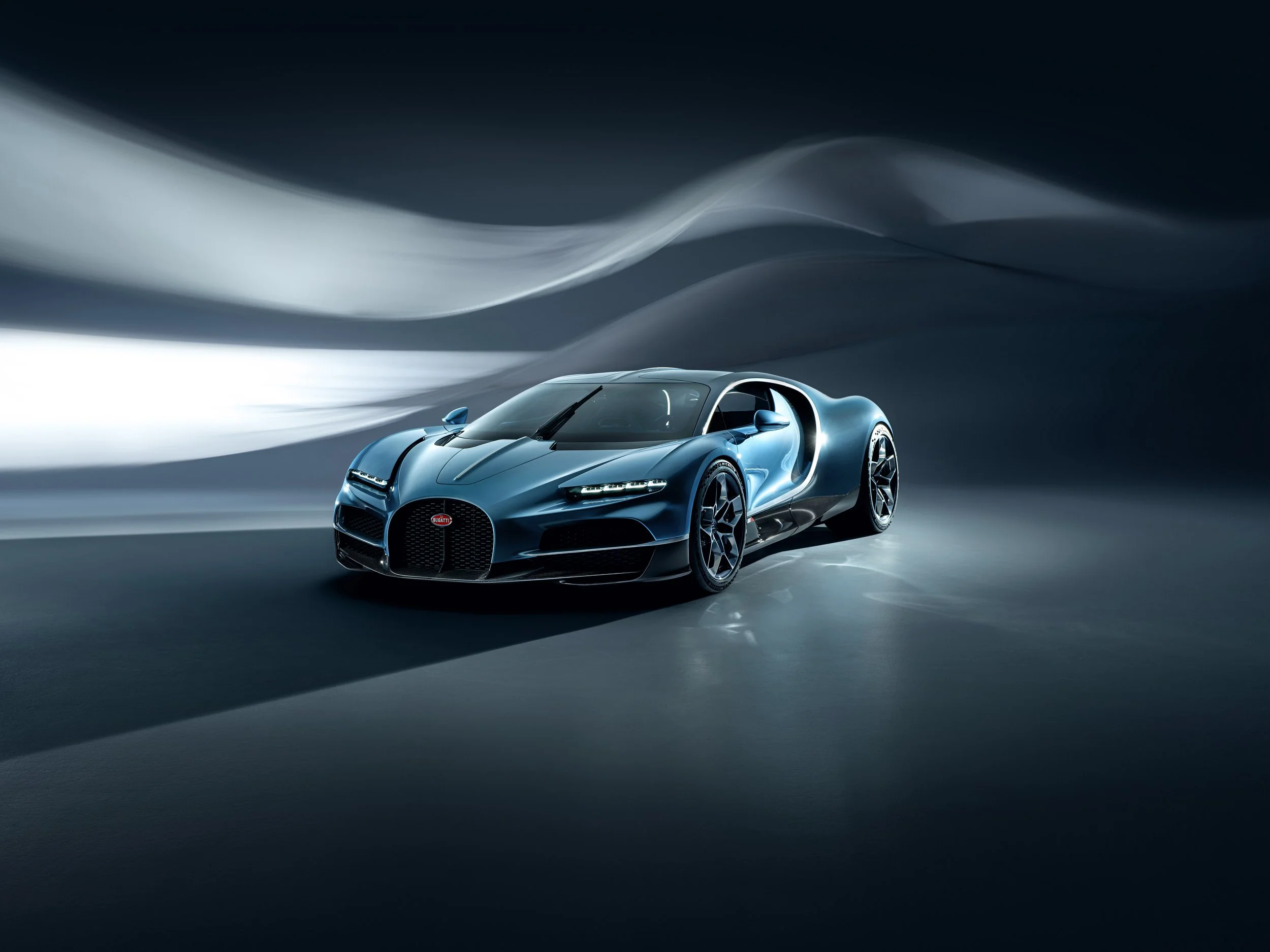Bugatti Tourbillon - The 1,775bhp V16 powered Chiron successor
Just 250 units will be made with prices starting at £3.2 million.
The Unveiling of the Bugatti Tourbillon
The automotive world held its breath for the unveiling of the Bugatti Tourbillon, a hybrid successor to the Chiron and the signalling of a new era for the legendary brand.
V16 Engine Power
We already knew about the V16 engine that would power the new Bugatti and now we have the full reveal for the Tourbillon, named after the French word for "whirlpool" or "whirlwind" which is a mechanism used in high-end watches to eliminate timing issues caused by gravity. Production of the Tourbillon will begin at Bugatti’s Molsheim factory in France in 2025 with deliveries to commence the following year.
Details of the V16 Engine
First, more on that V16 engine which replaces the outgoing W16 seen on the Chiron and Veyron for the last 20 years. Developed together with British company Cosworth, the 9,000rpm 8.3-litre engine produces 986bhp alone and that’s before you include the three electric motors connected to it, one of which can be found at the rear between the engine and transmission, the other two on the front axle. The motors are powered by a 25kWh oil-cooled 800V battery located in the central tunnel behind the passengers and are the work of the esteemed Croatian brand Rimac. The motors add an extra 789bhp, bringing the total horsepower produced to a whopping 1,775bhp. Rimac and Bugatti partnered up in 2021 to create the hypercars of the future and the Tourbillion is the first example of their collaboration. There’s even the bonus of 37 miles of all-electric range.
Speed and Performance
But, what does this mean in terms of raw speed? Early testing suggests that the Tourbillion can do 0-62mph in less than 2 seconds, 0-124mph in less than 5 and has a top speed of 276mph, although that may be a conservative estimate at this stage. With the large battery, electric powertrain and V16 engine, the Tourbillion still weighs slightly less than the 1,996kg Chiron thanks to the use of aluminium, titanium and carbon and modern 3D printing methods in the bodywork and chassis.







Design and Aerodynamics
Exterior Design
In terms of the overall design, the Tourbillon isn’t as radical as was originally expected from a new generation of Bugatti. That being said, it has a classic Bugatti look and is evolved around four Bugatti design elements inspired by history: the horseshoe grille, the Bugatti Line, the central ridge and the dual colour split.
Mate Rimac's Vision
Mate Rimac, CEO of Bugatti, said: “The development of the Bugatti Tourbillon was guided at every step by the 115 years of Bugatti history and the words of Ettore Bugatti himself. His mantras ‘if comparable it is no longer Bugatti’ and ‘nothing is too beautiful’ were a guiding path for me personally, as well as the design and engineering teams looking to create the next exciting era in the Bugatti hyper sports car story.”
Aerodynamic Considerations
The Tourbillon has been built for speed, and therefore aerodynamics was at the forefront of the designer’s minds when creating the car. Every surface, intake and vent has been carefully thought out and perfected to balance the aerodynamic forces of a rapid car with the thermodynamic requirements of a V16 engine, electric motors and battery at full performance.
There is a dividing line that runs from the Tourbillon’s bonnet to the tailgate and nearby, the brake lights stretch across the width of the rear and incorporate a 3D Bugatti logo.






Interior Design
Inside the Tourbillon, such is the case with the majority of Bugatti’s, the interior is simple and clean and has an analogue feel that matches its high-end watch ethos. The steering wheel design is also influenced by a watch mechanism, with the wheel itself separated from the fixed central hub, so when you turn the wheel, the instrument cluster remains unobstructed. The sole infotainment screen (the first ever used in a Bugatti) can be hidden from view in the glass and aluminium-designed centre console and is compatible with Apple Car Play. It has the ability to rotate and will appear in portrait when using the reversing camera and landscape when using it as an infotainment screen.
The seats are fixed in order to save weight and length, meaning the pedal box can be adjusted to suit whoever is in the car.
Bugatti will now increase its testing of the Tourbillon ahead of the production commencing in 2025, where only 250 units will be made with prices starting at £3.2 million.
words: Mike Booth
pictures & video: Bugatti

